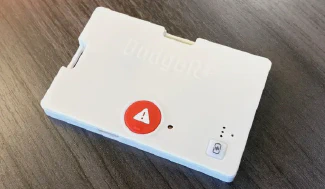Critical announcements within enterprise communications

What is enterprise communications? Simply put, it’s an industry built around fast, reliable communication tools with the purpose of informing community members of a large institution in a timely manner. Obviously, the individual communications sent can vary in priority level and also in how they’re sent. Some may require large-scale communication to the entire enterprise, while others are much more targeted and focused on work-efficiency. Enterprises that deploy these tools may use multiple solutions to get the job done.
The need to adapt quickly
The industry of enterprise communications has experienced tremendous change over the last several years. As cloud-computing technology continues to develop, enterprises (and the companies providing communication solutions for them) are gravitating toward more cost-efficient environments that see less on-site infrastructure and more cloud-based services utilized.
These solutions are more flexible and innovative than traditional enterprise communication solutions of the past, and they provide multiple pricing models for smaller organizations, allowing institutions of many different types and sizes to benefit from these critical tools.
Critical internal announcements
Internal communication may be just one part of enterprise communication, but it’s critical to implement properly, especially when considering potential emergency scenarios that can take place at any time and absolutely devastate your organization on many levels.
Without proper emergency communication protocols in place, your organization can be at increased risk of permanent closure when an emergency eventually occurs. The Occupational Safety & Health Administration estimates that up to 40% of businesses affected by a natural or human-caused disaster never reopen.
Unfortunately, customers don’t usually care about whether or not your business is dealing with, or recovering from an emergency. So if you’re not prepared to get back on track quickly, clients and customers will gladly take their business to your competitors instead.
To make sure your enterprise is protected from this risk, it’s imperative that you implement a critical communication tool that works within your organization’s protocols, without disturbing current workflows and software systems already in place. Let’s look at some of the key features you should consider when shopping around for your critical communication technology…
Multimodal approach
Critical communication technology can provide varying levels of protection, but in today’s world it’s extremely important that your enterprise is protected with a multimodal solution. This means that when you send out a mass alert, you can send it to multiple devices and platforms. These ‘methods of sending’ can include:
- Email alerts
- SMS (text) alerts to personal or work cell phones
- Phone calls to personal or work cell phones
- Phone calls to VOIP phones
- RSS feed (website banners)
- Push notifications to safety app users (quicker than SMS if you have an institutional safety app)
- Screen takeover alerts on computers
- CAP Alerts (CCTV, digital signage, loudspeakers)
- Social media (Facebook, Twitter)
- Blue light phones
- Webhooks (custom integrations)
A multi-modal approach ensures that your desired recipients receive your alerts in a timely manner. Without multimodality in place, critical alerts can fall through the cracks and leave portions of your community members in the dark. In a potential emergency situation, this can skyrocket your organization’s liability and tremendously increase financial risk.
Community feedback
A fair amount of critical communications providers will stop here, possibly providing multimodality within their system but not the ability for community members to respond back, thus informing the enterprise administrators of what’s happening at the ground level.
This community feedback functionality makes emergency response a two-way street. It’s a very real possibility that the people sending emergency alerts within an institution know less about the actual situation than some of the people within the institution receiving these alerts.
Requests for community feedback can be sent out via survey, message board, or in various other ways. In an emergency, time is everything, so your critical communication solution should display prompts for community feedback clearly and without clutter. There should also be as few steps as possible for recipients to submit their response (needing to log in or create an account before responding will likely deter most would-be responders).
Training and comfort level
Another key component to critical communication for enterprises is the comfort level that users of the software system have with the software itself. This may seem like an odd concern, as most enterprise-level software comes with an easy-enough-to-use interface these days… but we have to remember we’re talking about software that, ideally, is rarely used.
Providing realistic test modes and an ultra-simplified user interface can reduce hesitation and increase user confidence in the software. Remember, this critical technology needs to be embraced by multiple people across different levels of the organization, perhaps even speaking different languages. This means that your chosen critical communication solution should display preferred device languages to not only the recipients of the alerts, but also the system users.
Training is also tied in to ease-of-use and is even more important for departments with higher turnover rates. A self-onboarding approach with minimal supervisor training is ideal, so keep your eyes open for efficient onboarding and training materials provided by the vendor.
Additional considerations
Multimodality, community feedback capabilities, training and ease-of-use are vital elements of critical communication, but certainly not the only things to consider when looking for this enterprise communication solution. The following should be considered as part of your organization’s emergency response planning as a whole:
- Conducting a risk analysis of your emergency plan
- Determine who has the authority to issue alerts (before an emergency arises)
- Determine which situations constitute an emergency, and how you will act during each
- Test your critical communication system regularly and make them as realistic as possible (during busy times)
- Create sub-groups of emergency responders who can receive information more frequently
- Inform your enterprise community about your critical communication system and plan
- Adopt an opt-out approach to text-alert enrollment
- Control the message if the media were to be involved by informing your communications team of protocols
- Include visitors and temporary community members in your emergency notification plans
- Consider those who are hearing and sight-impaired
- Ensure that all staff involved know about system updates and improvements
You’re the boss
Choosing a critical communication platform comes down to determining what your organization needs today and the flexibility required for the future. No one system is perfect, and you’ll likely want to carefully evaluate a variety of systems to find out their strengths and weaknesses before signing off on this pertinent safety communication tool.
Learn more about critical communication solutions.
Workplace violence prevention
Want to learn more about workplace violence prevention? We have the resources to get you informed and prepared. Visit our workplace violence prevention page to find out more.
Tags: Emergency notifications Emergency communication Mass notification system



